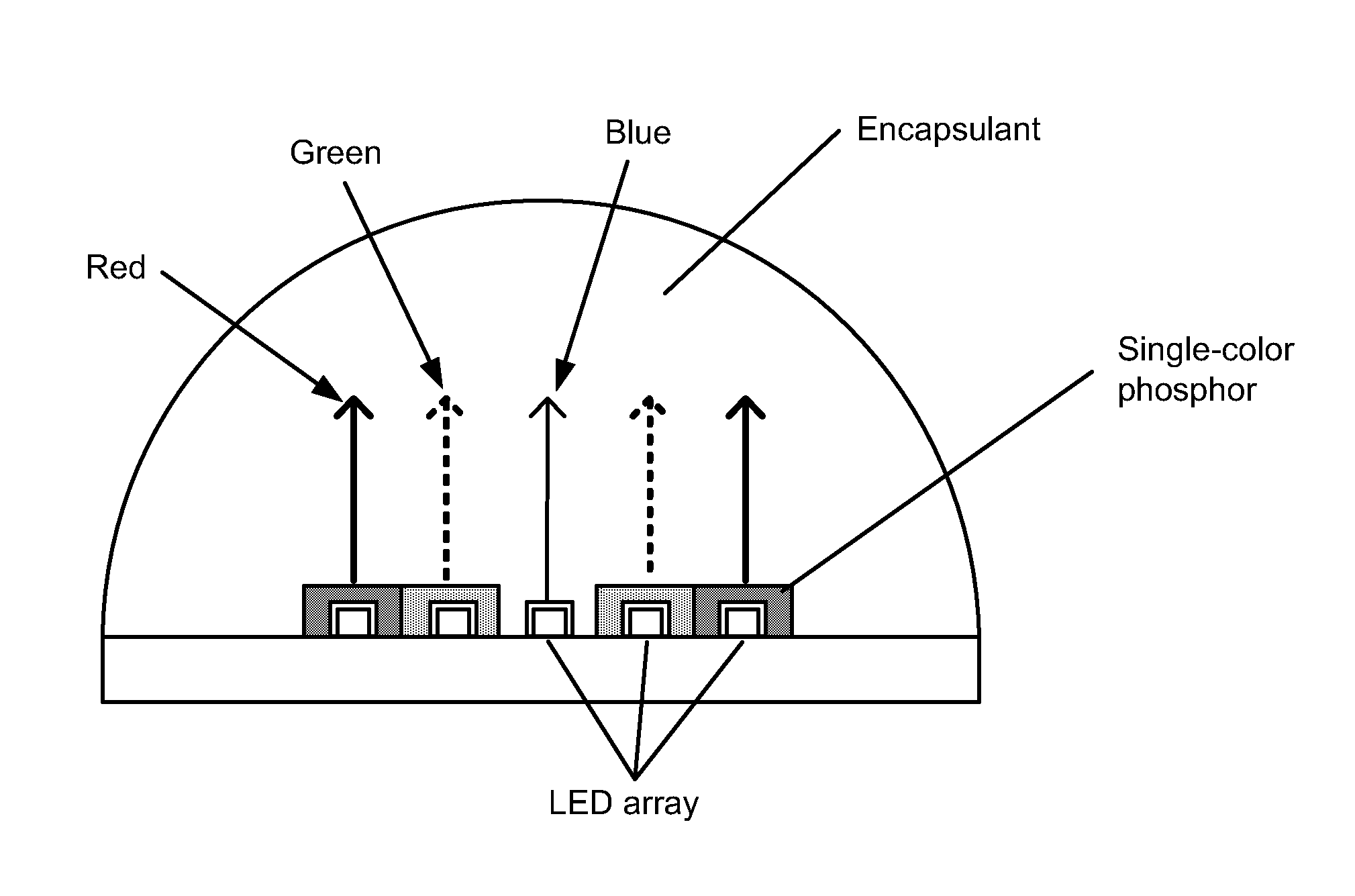System and Method for Selected Pump LEDs with Multiple Phosphors
a technology of leds and phosphors, applied in the field of light-emitting diodes (leds) pumping light with multiple phosphors, can solve the problems of high intensity, high-efficiency ingan-based green leds have been problematic, ingan-based leds have been expensive and difficult to produce on a wide-scale in an efficient manner, so as to reduce radiation re-absorption and improve light-output efficiency.
- Summary
- Abstract
- Description
- Claims
- Application Information
AI Technical Summary
Benefits of technology
Problems solved by technology
Method used
Image
Examples
Embodiment Construction
[0015]This invention is directed to lighting systems and to the provision of LED pump light with multiple phosphors. LEDs emitting radiation at violet and / or ultraviolet wavelengths are used to pump phosphor materials that emit different colors. Preferably the pump LEDs have a peak emission wavelength of about 405 to 430 nm under normal operating conditions.
[0016]As mentioned above, conventional LED lights sources are often inadequate. For example, one of the most-common approaches to generating high-CRI white LED light consists of LED devices emitting in the 440-470 nm range (often referred to as pump LEDs), which excite two phosphors: a yellow / green phosphor and a red phosphor. This approach is convenient because some yellow / green phosphors, such as Ce:YAG, exhibit high quantum efficiency.
[0017]Unfortunately, this approach is also constraining YAG-based phosphors can only be efficiently excited in a narrow spectral range around 460 nm, limiting the wavelength range of the pump LED...
PUM
 Login to View More
Login to View More Abstract
Description
Claims
Application Information
 Login to View More
Login to View More - R&D
- Intellectual Property
- Life Sciences
- Materials
- Tech Scout
- Unparalleled Data Quality
- Higher Quality Content
- 60% Fewer Hallucinations
Browse by: Latest US Patents, China's latest patents, Technical Efficacy Thesaurus, Application Domain, Technology Topic, Popular Technical Reports.
© 2025 PatSnap. All rights reserved.Legal|Privacy policy|Modern Slavery Act Transparency Statement|Sitemap|About US| Contact US: help@patsnap.com



